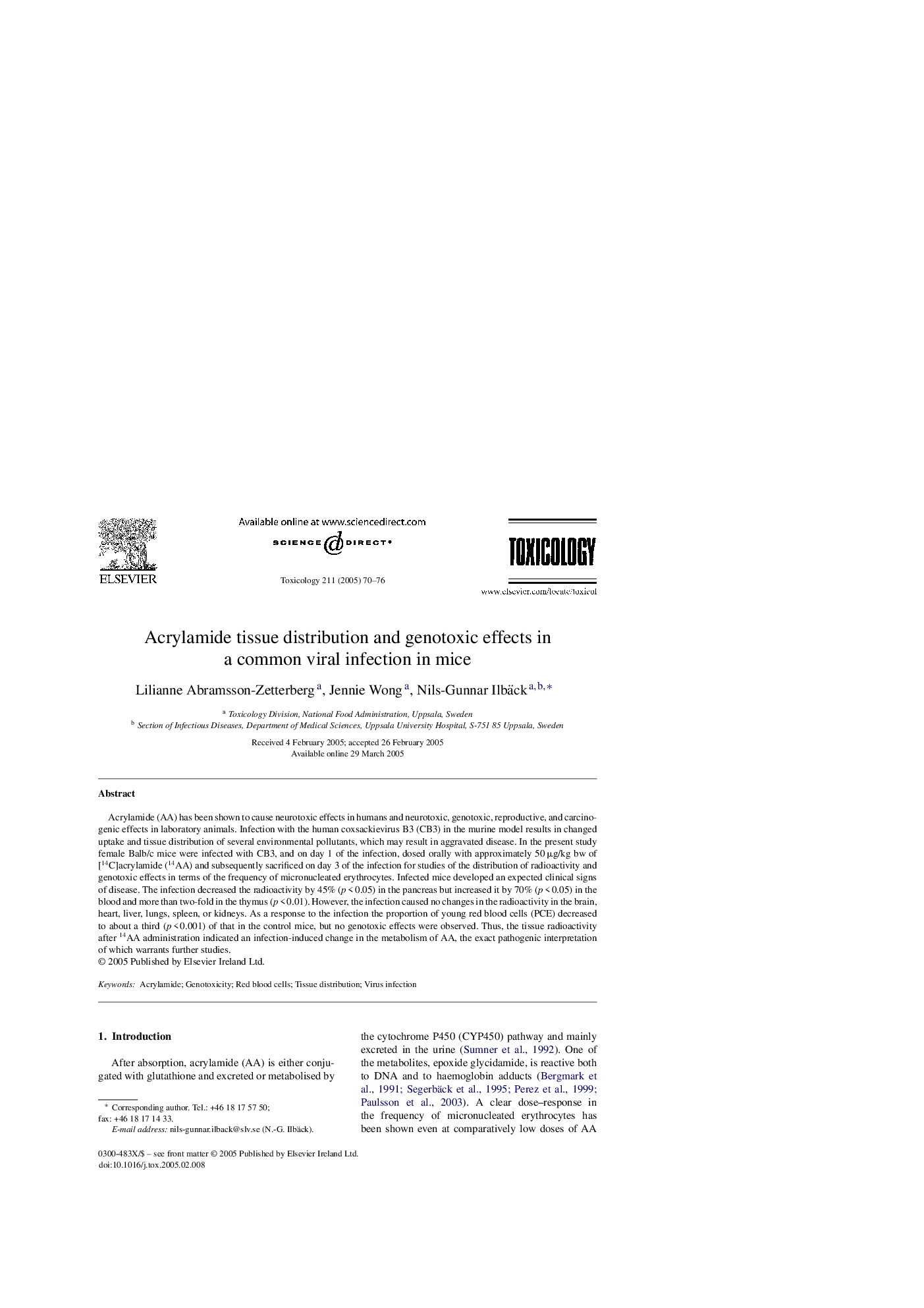| Article ID | Journal | Published Year | Pages | File Type |
|---|---|---|---|---|
| 9035014 | Toxicology | 2005 | 7 Pages |
Abstract
Acrylamide (AA) has been shown to cause neurotoxic effects in humans and neurotoxic, genotoxic, reproductive, and carcinogenic effects in laboratory animals. Infection with the human coxsackievirus B3 (CB3) in the murine model results in changed uptake and tissue distribution of several environmental pollutants, which may result in aggravated disease. In the present study female Balb/c mice were infected with CB3, and on day 1 of the infection, dosed orally with approximately 50 μg/kg bw of [14C]acrylamide (14AA) and subsequently sacrificed on day 3 of the infection for studies of the distribution of radioactivity and genotoxic effects in terms of the frequency of micronucleated erythrocytes. Infected mice developed an expected clinical signs of disease. The infection decreased the radioactivity by 45% (p < 0.05) in the pancreas but increased it by 70% (p < 0.05) in the blood and more than two-fold in the thymus (p < 0.01). However, the infection caused no changes in the radioactivity in the brain, heart, liver, lungs, spleen, or kidneys. As a response to the infection the proportion of young red blood cells (PCE) decreased to about a third (p < 0.001) of that in the control mice, but no genotoxic effects were observed. Thus, the tissue radioactivity after 14AA administration indicated an infection-induced change in the metabolism of AA, the exact pathogenic interpretation of which warrants further studies.
Related Topics
Life Sciences
Environmental Science
Health, Toxicology and Mutagenesis
Authors
Lilianne Abramsson-Zetterberg, Jennie Wong, Nils-Gunnar Ilbäck,
